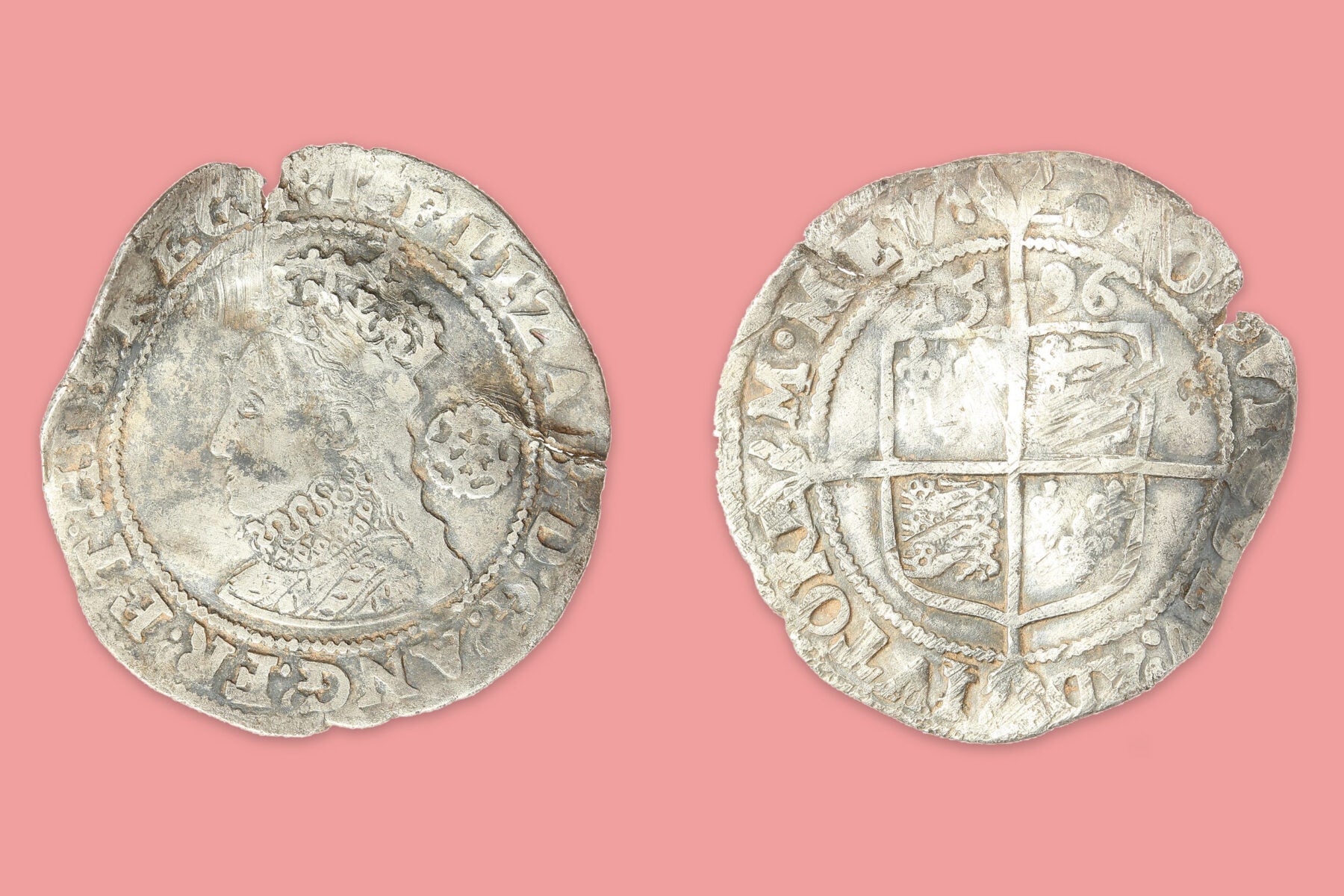

The Magic of a Crooked Sixpence
source link: https://daily.jstor.org/the-magic-of-a-crooked-sixpence/
Go to the source link to view the article. You can view the picture content, updated content and better typesetting reading experience. If the link is broken, please click the button below to view the snapshot at that time.

The Magic of a Crooked Sixpence
Coins were used for centuries in many ritual contexts, but the English silver sixpence was a particularly common charm—for several reasons.

In 1984, archaeologists discovered a 1596 English sixpence at a naval station in Maryland that had been the site of a Jesuit plantation from 1637 to 1942. A close look revealed lines that suggested the coin had been bent into thirds, carried in that bent state for some time, and then flattened out again. But why? To explore the possibilities, archaeologist Sara Rivers Cofield took a tour of coin magic.
Cofield writes that coins were used for centuries in many ritual contexts, and the English silver sixpence was a particularly common charm for several reasons. The silver metal was believed to protect holders and ward off evil. The coin’s design included a cross, which had symbolic importance both for Christians and in pre-Christian magic, as well as an image of a monarch, which could be associated with healing. Another factor was that six is a multiple of three, which is an important number in many religious and magical contexts.
In Britain and Ireland, people used the coins in many ways. Yorkshire dairymaids dropped them into cream to counteract witchcraft that prevented it from turning to butter. Others used them to help divine the future, strengthen prayers, or bring good luck. They could also be part of rituals associated with marriage and birth.
In many cases, the coins used for these purposes were deliberately bent or broken, making them “crooked.” This practice went back to pre-Christian European idea of “killing” an object to dedicate it to a deity. By the early fourteenth century, English people customarily bent coins when making a vow to a saint. In a moment of crisis, like the sickness of a loved one, a person might bend a coin while promising a pilgrimage to a saint’s shrine. This reflects a common aspect of magical or religious ritual across many cultures—the need for a personal sacrifice.
“Coins are bent not only to signify the promise of the pilgrimage, which is itself a sacrifice of time and effort on the part of the giver, but also to remove the coins from general circulation as currency,” Cofield writes.
Weekly Newsletter
Get your fix of JSTOR Daily’s best stories in your inbox each Thursday.
Privacy Policy Contact Us
You may unsubscribe at any time by clicking on the provided link on any marketing message.
After the Protestant Reformation discouraged this type of appeal to the saints, coin bending took on a new meaning. From the Elizabethan period through the eighteenth century, a bent coin could be a love token and was sometimes used in marriage rituals instead of wedding rings.
In the case of the Webster Field sixpence, Cofield writes, the fact that it was bent strongly suggests it was used in some ritual practice. On the Jesuit plantation, it could have been meant as an offering to a saint—a folk practice of which the priests in charge of the place might or might not have approved. On the other hand, it could also have been used as a charm for butter churning, a token used at a wedding that could have been performed by clergy at the site, or in a range of other ways including as a simple good-luck charm.
Support JSTOR Daily! Join our membership program on Patreon today.
Please contact us.

Resources
JSTOR is a digital library for scholars, researchers, and students. JSTOR Daily readers can access the original research behind our articles for free on JSTOR.
Get Our Newsletter
Get your fix of JSTOR Daily’s best stories in your inbox each Thursday.
Privacy Policy Contact Us
You may unsubscribe at any time by clicking on the provided link on any marketing message.
Recommend
About Joyk
Aggregate valuable and interesting links.
Joyk means Joy of geeK